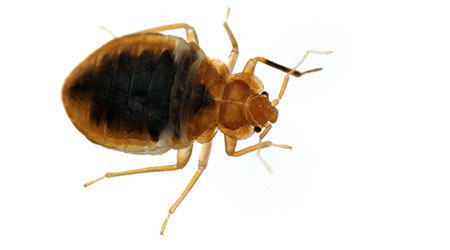« Back to Facilities Management Maintenance & Operations Category Home
Bed Bugs in the Office: Warning Signs, Precautions, and Treatments
Jennifer Brumfield, Contributing Writer October 13, 2023
- Maintenance & Operations
This article was originally published in 2018 and has been updated in 2023 to reflect current information.
Celebrities and top fashion moguls from across the globe attended Paris Fashion Week earlier this month, and among the new trends released one thing that they never thought would be in style was bed bugs.
Bed bugs have currently infested Paris, leaving the potential for many fashion week attendees to carry the vermin back to major metropolitan areas like New York, London and Los Angeles. The pests do not discriminate. Anyone could get them and take them to new facilities if they aren’t careful. That's why it's important for facility managers responsible for office space to be aware of the warning signs of bed bugs, the precautions that can be taken, and the treatments available.
A study by MTB Pest Control found that 64 percent of pest management professionals (PMP) believe that bed bug infestations are on the rise. While infestations can occur all year round, 61 percent of respondents noted season variations in frequency, with summer being the peak season. Meanwhile, a 2015 study by the National Pest Management Association found 99.6 percent of pest professionals treated for bed bugs in the past year, while 45 percent of those surveyed encountered a bed bug infestation in an office building.
Offices can easily find themselves with a bed bug infestation because these blood-suckers are the pest world's best hitchhikers. Bed bugs do not like to remain on human bodies, but hide out in clothes, bags, and other personal belongings, going from place to place looking for their next meal. Once inside a building, they can spread quickly — under ideal conditions, an infestation left undetected for a year can turn into more than 10,000 bed bugs.
While bed bugs are not known to spread diseases, their bites can cause itchy, red welts on the skin. Their presence can also lead to business disruptions, reputation damage, and even human-resources, risk-management, and litigation issues if allowed to linger for too long.
Because bed bugs can enter a building at any time on personal belongings, it's impossible to completely prevent them; however, there are measures facility managers and tenants can take to mitigate the risk of an infestation.
Know the Signs
Bed bugs are small, flat and round, about 2-3 mm in length and brown in color, resembling a small apple seed. Signs of a bed bug infestation include live or dead bed bugs, small red to rust-colored stains on furniture or walls, shed bed bug skins, or white, sticky eggs.
Take Precautions
Regularly inspect all areas of the office for signs of bed bugs. Look in cracks and crevices, especially around chairs, where the carpet meets the baseboards, and behind electrical outlets. Pay extra attention to employee break rooms, lounges, and other areas with plush furniture where people congregate.
Vacuum every day. With so many people coming and going each day, the potential for bed bugs is always present. Regular vacuuming of carpets and furniture can help eliminate and prevent bed bugs.
It's a good idea to eliminate clutter, as it can provide more hiding spots and make it more difficult to detect bed bugs. And before second-hand furniture is purchased and brought to the office, thoroughly inspect it, as bed bugs may already be living in it. Don't buy any furniture that has signs of bed bugs.
It's also worthwhile to encourage tenants and employees to be vigilant about bed bugs in their own homes and while traveling.
Treatment
Seek expert help immediately if you suspect bed bug activity in your building. Bed bug problems are easiest to resolve when caught early on, but tackling it on your own can be ineffective and costly. An experienced pest management professional can confirm if bed bugs are present and recommend the best treatment options for your facility, which may include the following:
- Disposal or laundering of infested items: If a pest management professional determines that the bed bug activity is limited to a few items, it may be possible to dispose of them or put them in a dryer at a high temperature.
- Chemical treatments: There are several chemical treatments that can be used, including sprays, liquids and dusts.
- Fumigation and heat control: A licensed professional can customize a fumigation or chamber heat treatment, both of which kill bed bugs at all stages of life.
With lots of potential hosts to feed on and even more places to hide, offices are ripe for bed bug infestations. Don't let bed bugs turn your office into a pest hotel.
Jennifer Brumfield is a training and technical specialist and board-certified entomologist for Western Pest Services, a New Jersey-based pest management company serving major Northeastern markets. Learn more about Western by visiting www.westernpest.com








